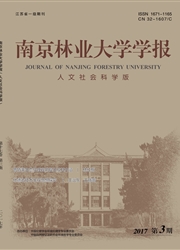

 中文摘要:
中文摘要:
1872年世界上第一座国家公园建成,之后其先进的生态保护理念和管理体系逐渐影响全球。2013年之后,建立国家公园体制已经成为一个重要的生态保护议题。截至2017年7月,我国已经设立三江源、东北虎豹、大熊猫、神农架、武夷山、南山、钱江源、北京长城、云南普达措等9个国家公园试点,各国家公园体制试点实施方案也已陆续出台。本文通过梳理和比较加拿大、新西兰、俄罗斯、美国、德国、法国、南非、英国、日本、韩国等十个国家的国家公园管理体系特点,以及结合前人的研究结果,将这些国家的国家公园管理体系分为自上而下型管理体系、地方自治性管理体系、综合型管理体系等三个类型,同时从机构设置、部门职能、人员配置、管理权限和负责事务等方面进一步阐述不同国家的国家公园管理体系的特点。经过分析比较,研究发现依据不同的国情,各国在国家公园管理体系的设计上各有特色,同时也存在机构以垂直分布为主、职能设置大同小异,国家公园管理有一定的法律法规作为支撑等共同点。
 英文摘要:
英文摘要:
The first national park in the world was built in1872.Since then,the advanced conceptions of ecological conservation and management system have gradually spread around the world.Since2013,the establishment of the national park system has been an important topic for ecological conservation in China.So far,Chinese government has set up9trial national parks including Sanjiangyuan National Park,National Park for Amur Tiger and Amur Leopard,National Panda Park,Shennongjia National Park,National Forest Park of the Wuyi mountain,Nanshan National Park,qianjiangyuan National Forest Park,Beijing Great Wall National Park,Potatso National Park,and the trial schemes for national park system have been issued in succession.By comparing national park management systems of Canada,New Zealand,Russia,the United States,Germany,France,South Africa,the United Kingdom,Japan and Korea and combining with previous studies,this paper classifies national park management system into three categories:the top-down management system,the management system featured by local autonomy and the comprehensive management system.From the perspectives of institutional setup,department function,staffing,administration authority and transaction management,this paper further illustrates characteristics of national park management systems in different countries.After the analysis and comparison,it is found that each country has it's own characteristics in national park management systems based on their own national conditions.They have also similarities in structure mainly featured by vertical distribution,in functioning and in legal support of laws and regulations.
 同期刊论文项目
同期刊论文项目
 同项目期刊论文
同项目期刊论文
 期刊信息
期刊信息
